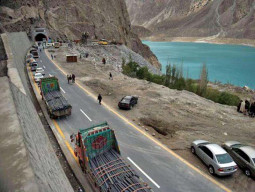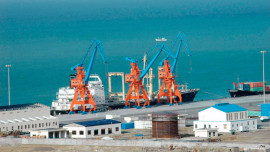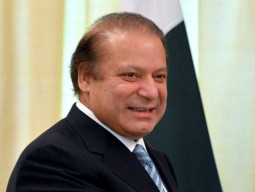
Many development organisations and agencies are taking part in infrastructure building and many others are taking part in developing energy and other projects to make money in the coming years. When we see the reality of CPEC, prima facie it looks great for the future of Pakistan. But upon careful examination, we can see there are several tricky issues to settle first. It may be hard to believe but the very agencies involved in the development of infrastructure have somehow become a hurdle in the way of smooth flow of trade between China and Pakistan.
Let us take a look at the recent past. In September 2015, Prime Minister Nawaz Sharif inaugurated the Pakistan-China Friendship Tunnels which were constructed by China over the Attabad Lake in Gilgit-Baltistan’s Hunza Valley. The Attabad tunnel was supposed to have opened the all-weather road for trade and transit with China. But in less than two months, the border management agencies closed the Pak-China border for four months, disrupting trade and movement of people as per their past practices. Because of harsh weather conditions there isn’t sufficient machinery and manpower to keep the road open.
From 1st April 2016 the road to China was expected to be kept open for trade and transit. This border generates massive sums of money in revenue for the government. But since the expected time for opening the border got delayed the Frontier Works Organisation (FWO) was asked to help clear the road. The road was later opened for traffic so that trade cargoes and people could get through.
It is important to recall that during that period of 2016 hundreds of Pakistani citizens were stranded on the Chinese side of the border. The Pakistan Embassy in Beijing had to evacuate them by air and spent millions of rupees in terms of airfare, financial support and hotel accommodation in Kashgar, China. I also found myself stuck in Kashgar for over a week and had to change my travel plans as a result.
It was not until the first week of May 2016 that the road was cleared for traffic. Both traders and the government lost millions of rupees in the wake of this blockade. For at least six months the movement of cargo and people was smooth. The traders in China and Pakistan were thrilled at the prospect of full-time border opening. Many Pakistani and Chinese traders planned their cargo movement via the Sost border. The cargo movement of many CPEC-related projects was also planned to be carried along the Karakoram Highway through the Sost border. As the season of Kinnow and potato was in full swing, a rich bonanza of export orders from Central Asian Republics was generated which could potentially bring in a huge influx of cash.
Then all of a sudden it was announced that the border would be closed for four months and would next be opened in April 2017. All the export shipments to Central Asian Republics were cancelled and Pakistan lost money as well as opportunity. The Lahore Chamber of Commerce and Industry was cut up over the border closure but no action was taken by the government.
We are already in the middle of April and there is little sign of the border being reopened. Like the previous year, border management agencies are still clearing the road for traffic. The shipments that were supposed to reach Sost on April 1 remained suspended due to uncertainty over the border opening. Truckers on both sides of border are still waiting to get a go-ahead notice.
Similarly, vital cargo of the Dasu dam project could not be transported via the Sost border. And now it will come by sea to Karachi and then move to the project’s site. All this means increased transportation costs and longer transit time. Who will pay for this increase? Will it be the Chinese, who are investing in CPEC projects, or the people of Pakistan? The answer is ultimately the people of Pakistan, who will have to bear the extra cost plus bank interest on it.
Several other troubling questions also arise. Why have the country’s border management agencies and the FWO not been able to keep the road open during the winter? Though billions of dollars have been invested in the Karakoram Highway infrastructure it seems there are not enough funds available for maintaining safe road conditions. Is the federal government turning up its nose at the prospect of earning millions of rupees every day in terms of revenue? Aren’t the trade and transportation activities between China and Pakistan important for the economies of the two states?
What needs to be done is simple. Proper machinery and equipment, in sufficient quantities, should be provided to the border management agencies. Weather-proof living at the border post and other places for the security and management agencies in that area will boost the morale of security officials. It will strengthen their resolve to keep the road open and safe. Pakistan will see huge benefits in terms of revenue. It will also help improve the country’s position in the region as an emerging economy.
Published in The Express Tribune, April 16th, 2017.
Like Opinion & Editorial on Facebook, follow @ETOpEd on Twitter to receive all updates on all our daily pieces.












































COMMENTS (3)
Comments are moderated and generally will be posted if they are on-topic and not abusive.
For more information, please see our Comments FAQ